The last 3 months have been unseasonably wet for states across the southern and central regions of the U.S. Mississippi, Missouri, Louisiana, Illinois, Indiana and Texas have all experienced significant bouts of rain during this period, and crops in those states will likely see more rain in the weeks to come.
What issues can arise during periods of excessive rainfall, and how can we mitigate that stress? We spoke with Lauden Wheeler, our digital agronomist in west central Missouri, for these insights.
Lauden has seen the rain firsthand in West Central Missouri, and has spoken with family, friends and colleagues about their waterlogged fields. Lauden says that rainfall can bring a host of issues, specifically for corn and soybeans, during this part of the growing season.
Before discussing the crop stress that comes with heavy rainfall, Lauden emphasized the importance of finding stress early. No matter what the issue is, finding and addressing it early is a grower’s best chance of saving damaged crops.
FluroSense help agronomists and growers identify crop stress early by detecting changes in biomass and coloration in crops over time, mapping a crop’s growth trajectory and identifying areas that aren’t performing as well as predicted. This can help growers get to stressed areas of their fields quickly, identify and target specific stressors (discussed in more detail below), and take action before those stressors become more severe.
Rainfall and Associated Crop Damage
At its heaviest, rain can create ponding in fields. Ponding inhibits a plant’s ability to pull oxygen from the soil, causes structural damage to the plant and leeches essential nutrients like Nitrogen. Heavy rain can also inhibit root development in plants (“wet feet,” as many agronomists call it), which makes the plant more susceptible to wind damage.
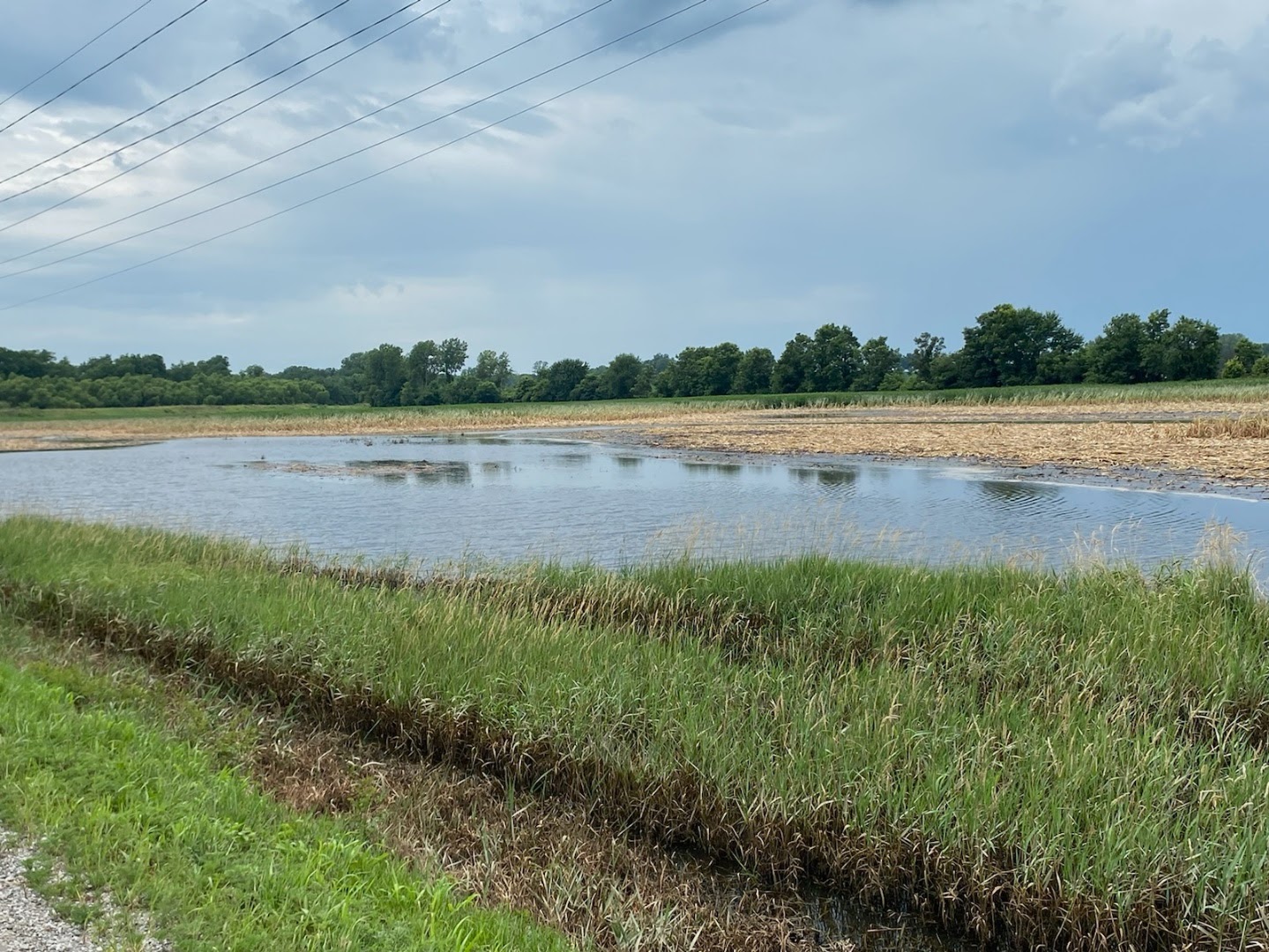
In addition to this, Lauden also cautions that heavy rainfall can increase disease pressure in plants. “Disease, especially foliar diseases, travel in warm, humid climates. Warm rains traveling through the country make it easier for disease to spread.” During periods like this, plants are at risk for foliar disease in addition to the diseases that come with water-logging, like stalk rot in both corn and soybeans, and sudden death in soybeans.
The Importance of Scouting
It’s easy to assume crop stress when there’s ponding in a field; however, Lauden encourages agronomists to get out into the fields and scout for structural damage and disease as early as possible. “It’s important for agronomists to get out there, to scout fields and watch for disease. These warm, humid conditions are a recipe for fungal disease growth.” Indeed, research from the Nebraska Extension for Plant Pathology supports this, finding that “wet conditions are favorable for plant pathogens and the development of diseases” in corn.
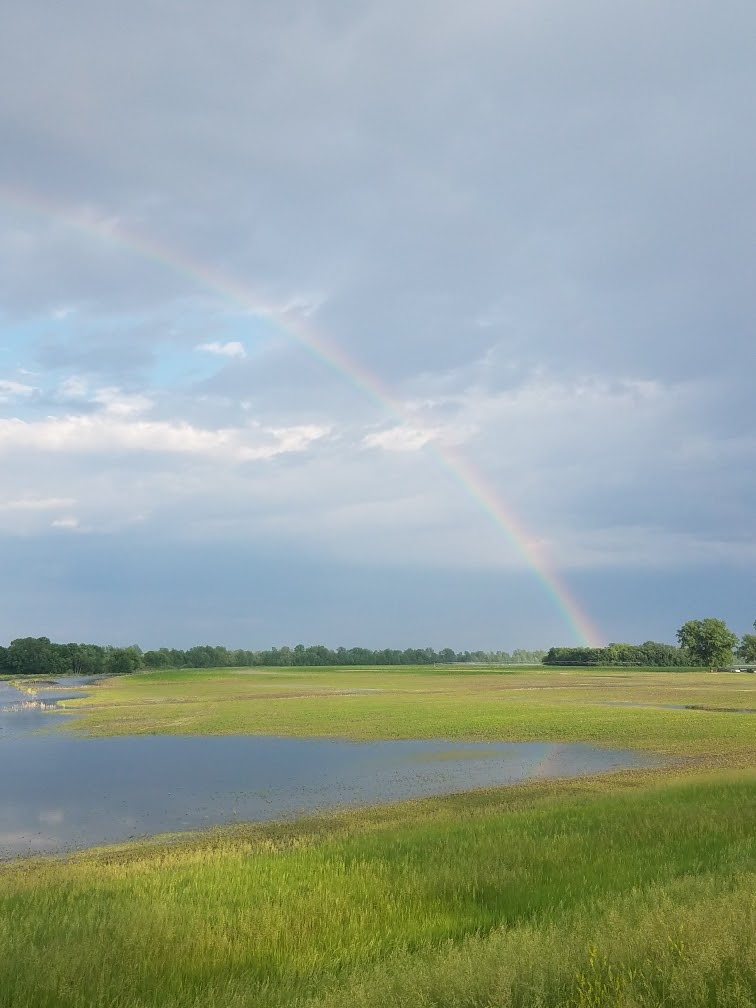
Crop Stress Detection
While some diseases are carried at the base of the plant, corn and soybeans often show signs of disease at the foliar level. Regrow’s FluroSense platform can detect abnormal foliar coloratio, and help agronomists identify focus areas for scouting. Lauden emphasizes that many rain-caused ailments are unpreventable, but the earlier an agronomist or grower identifies the stress, the easier it is to mitigate damage or take additional action.
FluroSense Crop Stress alerts can also help growers detect later-onset stresses that have been caused by excessive rainfall. Some water-caused stresses don’t appear right away in plants, and some damage doesn’t become apparent until it’s compounded with other events. For example, wet feet can cause plants to lay over easily in strong wind, but this stress isn’t always visible until there’s a wind event.
The following images show FluroSense stress detection in a Missouri corn field before flooding immediately after a flooding event (July 2), and 3 days after the event (July 5). The platform identified the stress induced by rainfall, and tracked the severity of that stress over time. Stressed areas are shown in red.
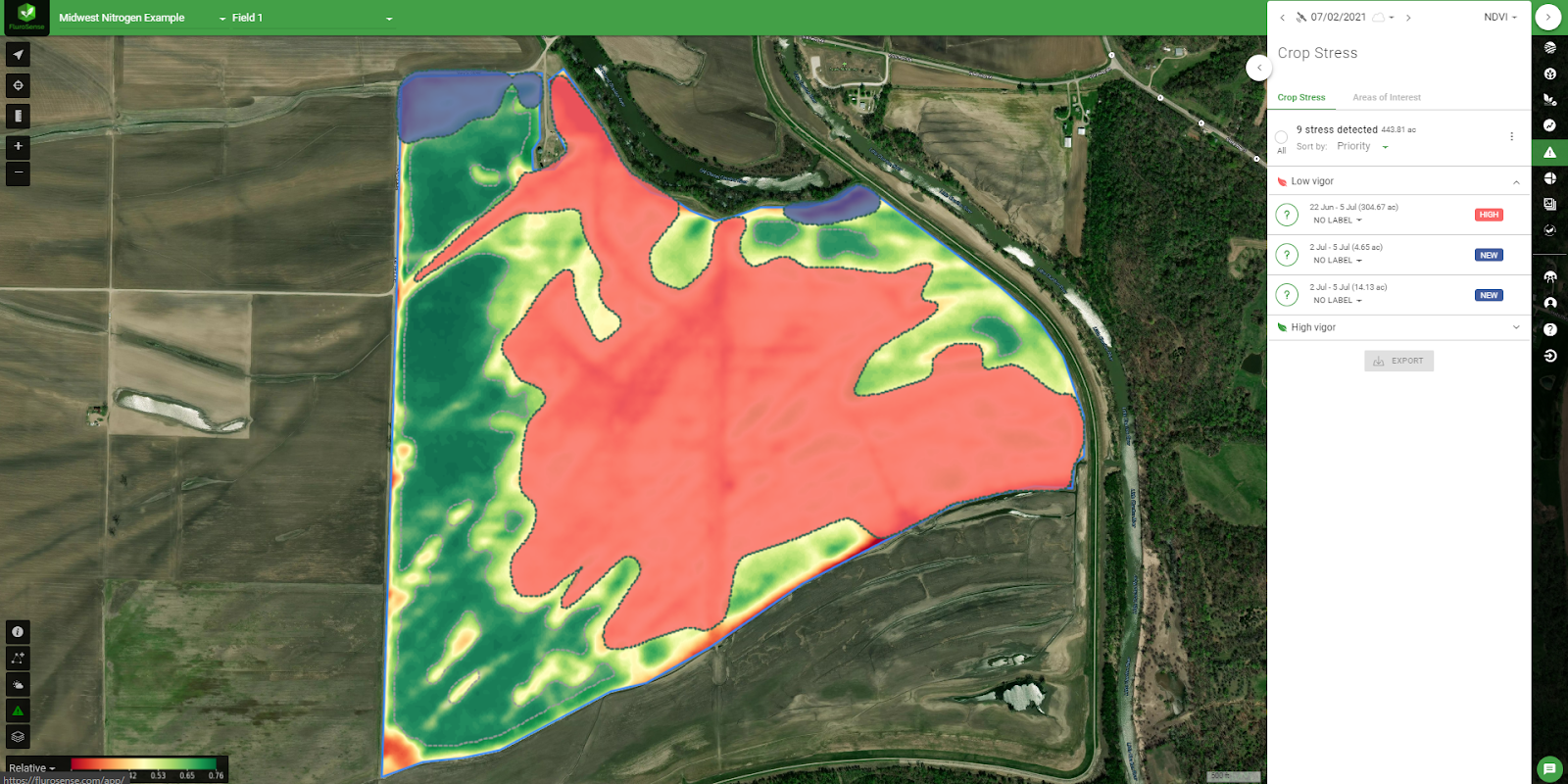
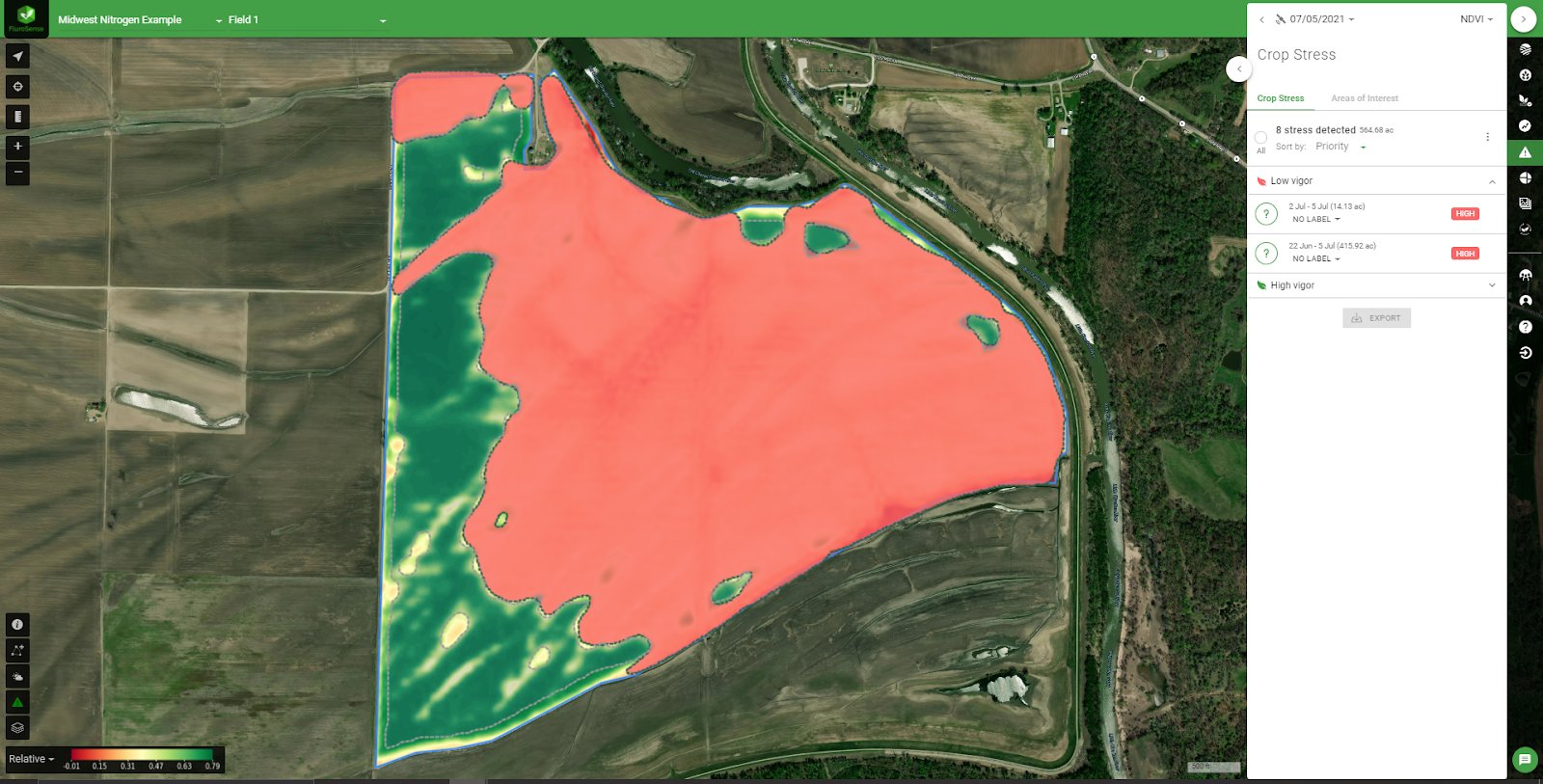
The crop stress, and its growth over time, is clearly visible through the FluroSense platform. It gives the growers on these fields a map of crop stress, and allows them to focus on the areas that have been most heavily impacted by the rainfall.
Considering Nitrogen Applications
At this time in the season, it may be too late for growers to replant their crops. However, there may still be ways to mitigate crop damage before it severely affects yield. Lauden says that some growers may have an opportunity to reapply Nitrogen in fields that have been water-logged. “You can make up for lost Nitrogen, in some cases.” That’s where the FluroSense NRx tool can help; it allows growers to apply Nitrogen more precisely, making applications more cost-efficient and reducing financial loss. However, Nitrogen applications in this situation are dependent on the growers and agronomists, and what they determine is best for the crop’s health.
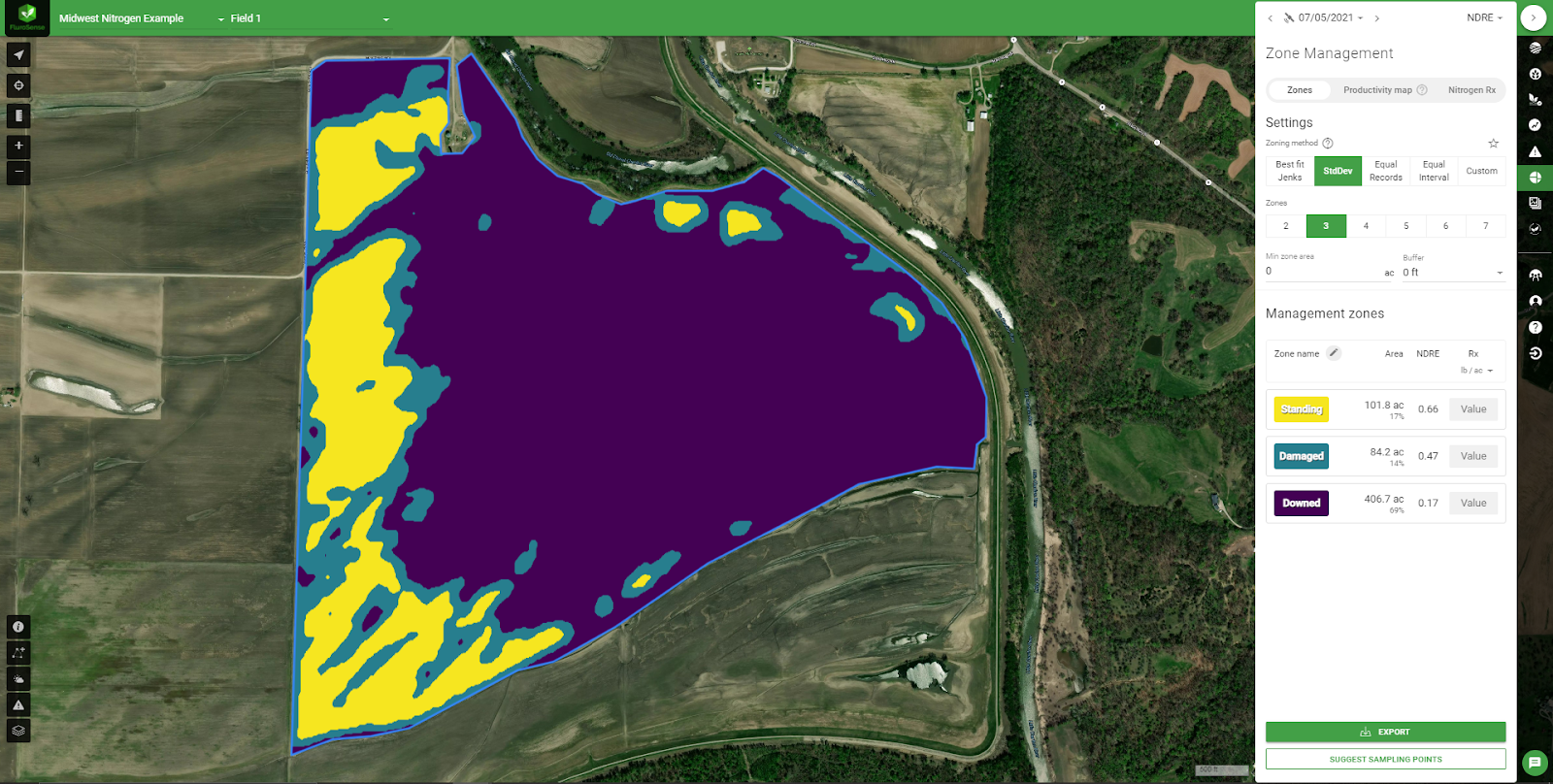
As always, weather is unavoidable and often unpredictable. However, the sooner growers and agronomists can assess and mitigate crop stress, the less impact adverse weather can affect yield. Regrow’s FluroSense platform and the NRx tool can help detect crop stress, guide agronomists to scouting locations and make Nitrogen re-application more efficient.
Learn more about FluroSense here.



